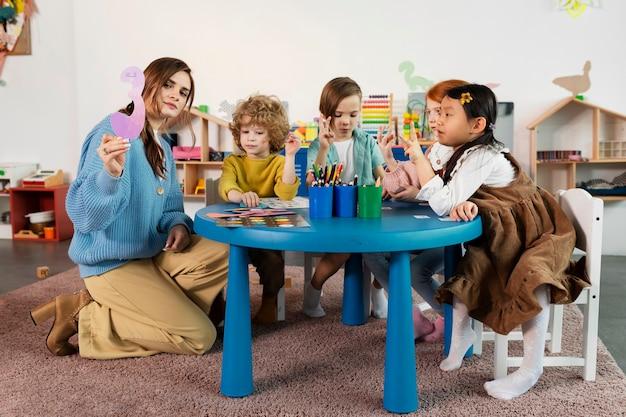As parents, the decision to entrust our children’s care and early education to a preschool or daycare center is one of the most important choices we make. We want to ensure that our little ones are in a safe, nurturing, and stimulating environment that fosters their overall well-being and development. In this guest post, we’ll explore the key elements of creating and maintaining a healthy, supportive setting in preschools and daycare centers.
The Importance of a Preschool Nurturing Environment
A nurturing environment is essential for the healthy growth and development of young children. In these formative years, children are rapidly acquiring new skills, exploring their surroundings, and forming crucial social-emotional connections. As we know, preschool and daycare centers that prioritize a warm, caring atmosphere can have a profound impact on a child’s sense of security, self-esteem, and overall well-being.
Fostering Positive Relationships
One of the hallmarks of a healthy, nurturing environment is the quality of the relationships between caregivers and children. Preschool and daycare staff should be trained to engage in responsive, sensitive, and respectful interactions with the children in their care. This involves actively listening, providing comfort and encouragement, and fostering a sense of trust and belonging.
Inclusive practices are a vital component of a nurturing environment. Preschools and daycares should be equipped to support children with diverse needs, including those with special educational requirements or an autism diagnosis. Specialized evaluations, individualized support, and a flexible, adaptive approach can ensure that all children feel valued, included, and empowered to reach their full potential.
Promoting Social-Emotional Development at daycare centers
In addition to academic readiness, daycare centers play a crucial role in supporting children’s social-emotional development. This includes teaching conflict resolution skills, helping children manage their emotions, and fostering empathy and collaboration. By prioritizing these important life skills, educators can create a harmonious, supportive environment where children feel safe to explore, learn, and grow.
A well-designed, developmentally appropriate curriculum is essential for maintaining a nurturing environment. Preschools and daycare centers should offer a balance of structured learning activities and unstructured play, catering to the unique needs and interests of the children in their care. This might involve hands-on, experiential learning, exposure to diverse art forms, and opportunities for physical activity and outdoor exploration.
Empowering Families and Building Partnerships
Preschools and daycare centers that prioritize family engagement and partnership can further enhance the nurturing environment. By involving parents and caregivers in the educational process, sharing regular updates, and welcoming their input, these institutions can create a sense of community and support that benefits the children.
The physical environment of a preschool or daycare center also plays a crucial role in maintaining a nurturing atmosphere. Factors such as cleanliness, safety, natural lighting, age-appropriate furnishings, and designated spaces for exploration and play can all contribute to a child’s sense of comfort and well-being.
Conclusion
Preschools and daycare centers have a profound impact on the lives of young children, and they must prioritize the creation and maintenance of a healthy, nurturing environment. By focusing on positive relationships, inclusive practices, social-emotional development, engaging curriculum, family partnerships, and a safe, stimulating physical space, these institutions can support the holistic growth and well-being of the children in their care.

